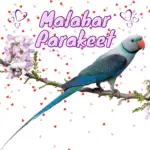
Layard’s Parakeet 29–31 cm. Upper mandible red with yellowish tip, lower dull brownish; forehead and area around the eye to lower mandible soft green,
rest of head bluish-grey shading to the black area on chin and sides of the neck, this in turn bordered by broad emerald collar extending around the neck and onto underparts; mantle, back, and rump bluish-grey;
wings dull green, greyish on lesser and yellowish on median wing-coverts; tail deep grey-blue tipped yellow. Female has a greyish-black bill. Immature replace grey with green.
Systematics History
Layard’s Parakeet Specific name sometimes erroneously listed as calthorpae; in HBW was emended to calthropae on grounds that it was based on maiden name (Calthrop) of E. L. Layard’s wife, but there is no internal evidence to permit this emendation. Monotypic.
Subspecies
Monotypic.
Distribution
C & S Sri Lanka.
SOURCE: Nadika Hapuarachchi
Habitat
Layard’s Parakeet Hill forests and clearings ranging up to 2000 m, penetrating to sea level only in parts of the wet zone in SW of the island.
Movement
Apparently sedentary, but altitudinal movements may occur.
Diet and Foraging
Fruits of Macaranga tomentosa, wild fig, and wild cinnamon, flowers of “bomba tree”, buds and nectar, with less granivory owing to more strictly arboreal habits.
Sounds and Vocal Behavior
Most vocalizations involve fast series of short nasal screeches such as “keh” or similar. When perched, the repertoire is more varied, including squabbling conversational calls, but most notes possess the same shrill nasal quality.
Breeding
Jan–May, and often again in Jul–Sept. Layard’s Parakeet Nest is usually high (10–25 m) in a hollow limb or hole in a tree, including Pterocarpus, Syzygium, and Terminalia. Eggs 2–4; in captivity, incubation c. 3 weeks, nestling period 7 weeks.
Conservation Status
Not globally threatened. CITES II. A BirdLife “restricted-range” species. the Layard’s Parakeet has suffered from the conversion of forest to the plantation, and in some areas has disappeared completely. Still fairly common in Sinharaja National Heritage Wilderness Area, and in the forest around Kitulgala.




















